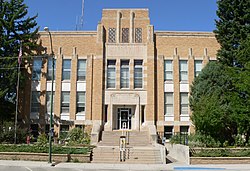블랙 효모
Black yeast"검은 효모"는 때로는 흑색 곰팡이, 흑색 곰팡이, 백색 곰팡이, 미세식민 균류 또는 메리테마 균류도[1] 대부분 무성으로 번식하는 느리게 자라는 여러 가지 미생물군이다. 싹트는 세포에 의해 생식하는 제네랄은 거의 없는 반면, 다른 것에서는 허혈성 또는 용혈성(등산성) 번식이 우선이다.[2][3][4][5] 검은 효모는 특히 세포벽의 흑색화 등 몇 가지 독특한 특성을 공유한다. 세포벽에 멜라닌을 주입하고 카로티노이드와 마이코스포린과[6] 같은 다른 보호물질의 존재는 흑색 균이 환경적 스트레스에 대해 강한 내성을 가질 수 있게 하는 수동적 생리학적 적응을 나타낸다.[7] 이 표현형을 묘사하기 위해 "폴리텍스트레모톨렌스"라는 용어가 도입되었는데, 그 좋은 예가 바로 아우레오바시듐 풀란이다.[8] 세포벽에[9] 1,8-디하이드록시나프탈렌 멜라닌이 존재하면 그 특징인 올리브색에서 진한 갈색/검은색까지 마이크로펑기에게 영향을 준다.
그 컨소시엄은 두 개의 유전학적으로 매우 다른 곰팡이 집단으로 구성되어 있다.[10][11] 많은 것이 카프노다이알레스, 도티데일레스, 플레오스포랄레스(종류 도티데오미세테스)에서 발견된다. 이 검은 곰팡이들은 대부분 극단적으로 발광성이 강한 생활양식을 가지고 있다. 이 집단의 많은 대표자들은 예를 들어 지중해 유역이나 뜨겁고 차가운 건조한 사막에서 맨 바위를 식민지화할 수 있으며, 따라서 암석 침입 균류 또는 [10][11]염전에서 발생한다.[12] 이 검은 효모들은 지금까지 알려진 것 중 가장 저항력이 강한 진핵생물로 여겨진다.[7] 그것들은 거의 비슷한 세 개의 연구 기사에 의해 80년대 초에 처음 설명되었다.[13][14][15] 차오티오시알레스(유로티오미테스급)[10][11]의 구성원은 탄화수소가 풍부한 환경이나 영양소가 부족하고 습한 실내 환경에서 발견되며, 엑소피알라(Wangiella)피부티디스와 같은 척추동물 숙주의 기회주의적 병원균으로 발생할 수 있다.[16] 몇몇 종은 다른 광전자뿐만[19] 아니라 이끼와[17][18] 연관되어 있으며 때로는 특정한 개미와 연관되어 있는 개미와도 연관되어 있다.[20]
최근 몇년 동안, E.dermatitidis 또는 Hortaea werneckii 같은 흑인 같은 균류 모델 미생물로 오염된 생태계의 materials,[25][26]의 오염된 area,[23][24]생물 열화에 전리 방사와 적응의 메커니즘의 biofiltration,[22]영향으로 astrobiology,[21]생물적 환경 정화에 대한 연구에서 점점 더 주목을 끌었다.높은 소금 conce에 Ation.n트트랙션[12] 브로드 연구소에 의해 조정된 협력적인 노력은 현재 생태학, 유전학, 병원성 등을 밝히기 위해 몇몇 검은 곰팡이의 게놈의 염기서열을 분석하기 위해 진행 중이다.
2011년 가정용 식기세척기에[27] 잠재적으로 병원성이 있는 검은 곰팡이가 발생했다는 연구 논문이 언론에 일부 잘못 보도돼 입소문이 났다.[citation needed]
검은 효모는 식용구름귀 곰팡이 오리큘리아 폴리트리차와는 관련이 없다.[10][11]
참조
- ^ Sterflinger, Katja (2006). "Black Yeasts and Meristematic Fungi: Ecology, Diversity and Identification". In Rosa, Carlos; Gábor, Péter (eds.). Biodiversity and Ecophysiology of Yeasts. The Yeast Handbook. pp. 501–14. doi:10.1007/3-540-30985-3_20. ISBN 978-3-540-26100-1.
- ^ Sudhadham, M.; Prakitsin, S.; Sivichai, S.; Chaiyarat, R.; Dorrestein, G. M.; Menken, S.B.J.; De Hoog, G.S. (2008). "The neurotropic black yeast Exophiala dermatitidis has a possible origin in the tropical rain forest". Studies in Mycology. 61: 145–55. doi:10.3114/sim.2008.61.15. PMC 2610309. PMID 19287537.
- ^ de Hoog, GS; Hermanides-Nijhof, EJ (1977). "The Black Yeasts and Allied Hyphomycetes". Studies in Mycology. 15: 1–222. OCLC 222951121.
- ^ Butinar, Lorena; Sonjak, Silva; Zalar, Polona; Plemenitaš, Ana; Gunde-Cimerman, Nina (2005). "Melanized halophilic fungi are eukaryotic members of microbial communities in hypersaline waters of solar salterns". Botanica Marina. 48. doi:10.1515/BOT.2005.007. S2CID 12181468.
- ^ Matos, T; De Hoog, GS; De Boer, AG; De Crom, I; Haase, G (2002). "High prevalence of the neurotrope Exophiala dermatitidis and related oligotrophic black yeasts in sauna facilities". Mycoses. 45 (9–10): 373–7. doi:10.1046/j.1439-0507.2002.00779.x. PMID 12421284. S2CID 4842988.
- ^ Gorbushina, A.A.; Kotlova, E.R.; Sherstneva, O.A. (2008). "Cellular responses of microcolonial rock fungi to long-term desiccation and subsequent rehydration". Studies in Mycology. 61: 91–7. doi:10.3114/sim.2008.61.09. PMC 2610304. PMID 19287531.
- ^ Jump up to: a b Gostinčar, Cene; Grube, Martin; De Hoog, Sybren; Zalar, Polona; Gunde-Cimerman, Nina (2010). "Extremotolerance in fungi: Evolution on the edge". FEMS Microbiology Ecology. 71 (1): 2–11. doi:10.1111/j.1574-6941.2009.00794.x. PMID 19878320.
- ^ Gostinčar, C.; Grube, M.; Gunde-Cimerman, N. (2011). "Evolution of Fungal Pathogens in Domestic Environments?". Fungal Biology. 115 (10): 1008–1018. doi:10.1016/j.funbio.2011.03.004. PMID 21944213.
- ^ Kogej, Tina; Wheeler, Michael H; Lanišnik Rižner, Tea; Gunde-Cimerman, Nina (2004). "Evidence for 1,8-dihydroxynaphthalene melanin in three halophilic black yeasts grown under saline and non-saline conditions". FEMS Microbiology Letters. 232 (2): 203–9. doi:10.1016/S0378-1097(04)00073-4. PMID 15033240.
- ^ Jump up to: a b c d Gueidan, C.; Villasenor, C. R.; De Hoog, G. S.; Gorbushina, A. A.; Untereiner, W. A.; Lutzoni, F. (2008). "A rock-inhabiting ancestor for mutualistic and pathogen-rich fungal lineages". Studies in Mycology. 61: 111–9. doi:10.3114/sim.2008.61.11. PMC 2610302. PMID 19287533.
- ^ Jump up to: a b c d Ruibal, C.; Gueidan, C.; Selbmann, L.; Gorbushina, A.A.; Crous, P.W.; Groenewald, J.Z.; Muggia, L.; Grube, M.; Isola, D.; Schoch, C.L.; Staley, J.T.; Lutzoni, F.; De Hoog, G.S. (2010). "Phylogeny of rock-inhabiting fungi related to Dothideomycetes". Studies in Mycology. 64: 123–133S7. doi:10.3114/sim.2009.64.06. PMC 2816969. PMID 20169026.
- ^ Jump up to: a b Plemenitaš, A.; Vaupotič, T.; Lenassi, M.; Kogej, T.; Gunde-Cimerman, N. (2008). "Adaptation of extremely halotolerant black yeast Hortaea werneckii to increased osmolarity: A molecular perspective at a glance". Studies in Mycology. 61: 67–75. doi:10.3114/sim.2008.61.06. PMC 2610308. PMID 19287528.
- ^ Staley, J. T.; Palmer, F.; Adams, J. B. (1982). "Microcolonial Fungi: Common Inhabitants on Desert Rocks?". Science. 215 (4536): 1093–5. Bibcode:1982Sci...215.1093S. doi:10.1126/science.215.4536.1093. PMID 17771840. S2CID 9032744.
- ^ Krumbein, W. E.; Jens, K. (1981). "Biogenic rock varnishes of the negev desert (Israel) an ecological study of iron and manganese transformation by cyanobacteria and fungi". Oecologia. 50 (1): 25–38. Bibcode:1981Oecol..50...25K. doi:10.1007/BF00378791. PMID 28310059. S2CID 27020398.
- ^ Friedmann, E. I. (1982). "Endolithic Microorganisms in the Antarctic Cold Desert". Science. 215 (4536): 1045–53. Bibcode:1982Sci...215.1045I. doi:10.1126/science.215.4536.1045. PMID 17771821. S2CID 42255976.
- ^ De Hoog GS, Guarro J, Gené J, Figueras MJ (2009). 아틀라스 오브 임상 균류, 세 번째 에드. 네덜란드 위트레히트의 센트라알부라우 voor Schimmelcultures.
- ^ Muggia, Lucia; Gueidan, Cecile; Knudsen, Kerry; Perlmutter, Gary; Grube, Martin (2012). "The Lichen Connections of Black Fungi". Mycopathologia. 175 (5–6): 523–35. doi:10.1007/s11046-012-9598-8. PMID 23161018. S2CID 14170265.
- ^ Harutyunyan, S.; Muggia, L.; Grube, M. (2008). "Black fungi in lichens from seasonally arid habitats". Studies in Mycology. 61: 83–90. doi:10.3114/sim.2008.61.08. PMC 2610299. PMID 19287530.
- ^ Gostinčar, Cene; Muggia, Lucia; Grube, Martin (2012). "Polyextremotolerant black fungi: Oligotrophism, adaptive potential, and a link to lichen symbioses". Frontiers in Microbiology. 3: 390. doi:10.3389/fmicb.2012.00390. PMC 3492852. PMID 23162543.
- ^ Voglmayr, Hermann; Mayer, Veronika; Maschwitz, Ulrich; Moog, Joachim; Djieto-Lordon, Champlain; Blatrix, Rumsaïs (2011). "The diversity of ant-associated black yeasts: Insights into a newly discovered world of symbiotic interactions". Fungal Biology. 115 (10): 1077–91. doi:10.1016/j.funbio.2010.11.006. PMID 21944219.
- ^ Onofri, S.; Barreca, D.; Selbmann, L.; Isola, D.; Rabbow, E.; Horneck, G.; De Vera, J.P.P.; Hatton, J.; Zucconi, L. (2008). "Resistance of Antarctic black fungi and cryptoendolithic communities to simulated space and Martian conditions". Studies in Mycology. 61: 99–109. doi:10.3114/sim.2008.61.10. PMC 2610303. PMID 19287532.
- ^ Prenafeta-Boldú, Francesc X.; Summerbell, Richard; Sybren De Hoog, G. (2006). "Fungi growing on aromatic hydrocarbons: Biotechnology's unexpected encounter with biohazard?". FEMS Microbiology Reviews. 30 (1): 109–30. doi:10.1111/j.1574-6976.2005.00007.x. PMID 16438682.
- ^ Robertson, Kelly L.; Mostaghim, Anahita; Cuomo, Christina A.; Soto, Carissa M.; Lebedev, Nikolai; Bailey, Robert F.; Wang, Zheng (2012). Nielsen, Kirsten (ed.). "Adaptation of the Black Yeast Wangiella dermatitidis to Ionizing Radiation: Molecular and Cellular Mechanisms". PLOS ONE. 7 (11): e48674. Bibcode:2012PLoSO...748674R. doi:10.1371/journal.pone.0048674. PMC 3490873. PMID 23139812.
- ^ Dadachova, Ekaterina; Bryan, Ruth A.; Huang, Xianchun; Moadel, Tiffany; Schweitzer, Andrew D.; Aisen, Philip; Nosanchuk, Joshua D.; Casadevall, Arturo (2007). Rutherford, Julian (ed.). "Ionizing Radiation Changes the Electronic Properties of Melanin and Enhances the Growth of Melanized Fungi". PLOS ONE. 2 (5): e457. Bibcode:2007PLoSO...2..457D. doi:10.1371/journal.pone.0000457. PMC 1866175. PMID 17520016.
- ^ Cappitelli, F.; Nosanchuk, J. D.; Casadevall, A.; Toniolo, L.; Brusetti, L.; Florio, S.; Principi, P.; Borin, S.; Sorlini, C. (2006). "Synthetic Consolidants Attacked by Melanin-Producing Fungi: Case Study of the Biodeterioration of Milan (Italy) Cathedral Marble Treated with Acrylics". Applied and Environmental Microbiology. 73 (1): 271–7. doi:10.1128/AEM.02220-06. PMC 1797126. PMID 17071788.
- ^ Gorbushina, A. A.; Krumbein, W. E.; Hamman, C. H.; Panina, L.; Soukharjevski, S.; Wollenzien, U. (1993). "Role of black fungi in color change and biodeterioration of antique marbles". Geomicrobiology Journal. 11 (3–4): 205–221. doi:10.1080/01490459309377952.
- ^ Zalar, P.; Novak, M.; De Hoog, G.S.; Gunde-Cimerman, N. (2011). "Dishwashers – A man-made ecological niche accommodating human opportunistic fungal pathogens". Fungal Biology. 115 (10): 997–1007. doi:10.1016/j.funbio.2011.04.007. PMID 21944212. Lay summary – ScienceDaily (June 20, 2011).
외부 링크
- 웨이백 기계에 보관된 2012-01-15 작업 그룹 블랙 효모 웹 사이트
- 광역연구소의 블랙 효모 데이터베이스


